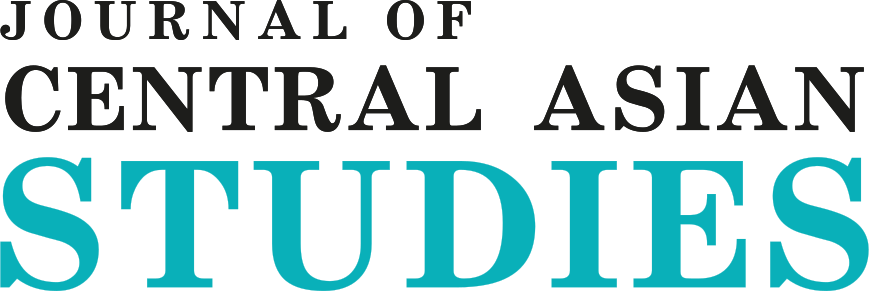International Organizations – Principals or Agents? Interparadigm Debate Between Neoliberals and Realists
DOI:
https://doi.org/10.52536/2788-5909.2022-2.01Ключевые слова:
международные организации, неолиберализм, ООН, рациональный дизайн, реализмАннотация
The role of international organizations becomes especially acute when nationstates cannot establish consensus with regard to local, regional and global issues. Considering that international organizations are made of members with varying power dynamics, there is often criticism that they represent the interests of power actors and not a true consensus-building platform that would enable solving collective issues. The schools of realism and neoliberalism in the framework of International Relations attribute various roles to international organizations (IOs); while the first regard them as mere instruments of nation-states, the latter views them as crucial international players with autonomous status. This article critically evaluates various issues related to the efficiency and design of international institutions in the framework of this interparadigm debate and with consideration of the UN as a prime example. The analysis illustrates that further research in the field of IOs is imperative for both theoretical modelbuilding as well as practical developments in the field. Finding suitable models is a vital concern for all international organizations, regardless of their purpose, size and origin.
Библиографические ссылки
Mearsheimer, J. (1994). The False Promise of International Institutions. International Security, 19(3), pp. 5-49.
Jonsson, C., & Tallberg, J. (2010). Transnational actors in global governance patterns, explanations and implications. Palgrave Macmillan.
Scholte, J. (2018). Civil society and NGOs. In International Organization and Global Governance (2nd edition). Routledge.
Alger, C. (1996). Thinking About the Future of the UN System. Global Governance, 2(3), pp. 335-360.
Tharoor, S. (2003). Why America Still Needs the United Nations. Foreign Affairs, 82(5), pp. 67-80.
Gordenker, L. (2018). The UN System. In International Organization and Global Governance (2nd edition). Routledge.
Koremenos, B., Lipson, C., & Snidal, D. (2001). The Rational Design of International Institutions. International Organization, 55(4), pp. 761-799.
Dunne, T., Kurki, M., & Smith, S. (Eds.). (2017). International Relations Theories
(Vol. 1). Oxford University Press.
Dent, C. (2013). Paths ahead for East Asia and Asia—Pacific regionalism. International Affairs (Royal Institute of International Affairs 1944-), 89(4), pp. 963–985.
Feinberg, R. (2008). Voluntary multilateralism and institutional modification: The first two decades of Asia Pacific Economic Cooperation (APEC). The Review of International Organizations, 3(3), pp. 239–258.
Kim, M., (2012). Why Does A Small Power Lead? ASEAN Leadership in Asia–Pacific Regionalism. Pacific focus, 22(1), pp.111-134.
Axelrod, R., Keohane, R. (1985). Achieving Cooperation under Anarchy: Strategies and Institutions. World Politics, 38(1), pp. 226-254.
Cox, R. W., & Jacobson, H. K. (1973). The anatomy of influence: Decision making
in international organization. Yale University Press.
Weiss, T. G., & Wilkinson, R. (Eds.). (2014). International organization and global
governance. Routledge, Taylor & Francis Group.
Malone, M. D., (2008). Security Council. The Oxford Handbook on the United Nations. Oxford University Press.
Peterson, M. J. (2006). The UN General Assembly. Routledge.
Abbott, K., & Snidal, D. (1998). Why States Act through Formal International Organizations. The Journal of Conflict Resolution, 42(1), pp. 3-32.
Abbott, K., & Snidal, D. (2000). Hard and Soft Law in International Governance. International Organization, 54(3), pp. 421-456.
Barnett, M., Finnemore, M. (1999). The Politics, Power, and Pathologies of International Organizations. International Organization, 53(4), pp. 699-732.
Rittberger, V., Zangl, B., Kruck, A., & Dijkstra, H. (2019). International Organization. (3rd ed.) Red Globe Press.
Putnam, R. (1988). Diplomacy and Domestic Politics: The Logic of Two-Level
Games. International Organization, 42(3), pp. 427-460.
Downs, G., Rocke, D., Barsoom P. (1996). Is the good news about compliance good news about cooperation? International Organization, 50, pp. 379-406.
Dai, X. (2005). Why Comply? The Domestic Constituency Mechanism. International Organization, 59(2), pp. 363-398.
Stein, J. (2005). Do Treaties Constrain or Screen? Selection Bias and Treaty Compliance. The American Political Science Review, 99(4), pp. 611-622.
Chayes, A., & Chayes, A. (1993). On Compliance. International Organization, 47(2), pp. 175-205.
Katzenstein, P., Keohane, R., & Krasner, S. (1998). International Organization and the Study of World Politics. International Organization, 52(4), pp. 645-685.
Загрузки
Опубликован
Выпуск
Раздел
Лицензия
Copyright (c) 2022 Шенин А., Раимжанова А.

Это произведение доступно по лицензии Creative Commons «Attribution» («Атрибуция») 4.0 Всемирная.










 Open content is licensed under the CC-BY
Open content is licensed under the CC-BY 